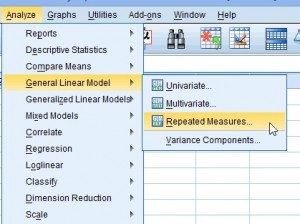Design of Experiments > Repeated Measures Design
What is a Repeated Measures Design?
In a repeated measures design, each group member in an experiment is tested for multiple conditions over time or under different conditions. For example, a group of people with Type II diabetes might be given medications to see if it helps control their disease, and then they might be given nutritional counseling. A blood test to measure glucose levels is given to the patients after each treatment.
- An ordinary repeated measures is where patients are assigned a single treatment, and the results are measured over time (e.g. at 1, 4 and 8 weeks).
- A crossover design is where patients are assigned all treatments, and the results are measured over time.
The most common crossover design is “two-period, two-treatment.” Participants are randomly assigned to receive either A and then B, or B and then A.
One important fact that sets crossover designs apart from the “usual” type of experiment is that the same patients are in the control group and all of the treatment groups. A patient is measured by how well they respond to treatments against themselves; the “control” is the original status of the patient. For example, a patient undergoing nutritional counseling is measured before treatment (the control part) and after treatment (the experimental part).
Advantages and Disadvantages
Advantages include:
- Fewer patients are needed overall. In a traditional experiment, you would need x patients per experimental group, plus a control; If you had three experimental conditions (e.g. nutrition, exercise, drugs) plus a control, you would need 4x patients. In a repeated measures design, you would only need one group of patients of size x, because all patients are given all conditions.
- Fewer patients are needed to detect an effect size.
- Higher statistical power: controlling for variability between subjects is built in.
Disadvantages include:
- Order effects: the possibility that the position of the treatment in the order of treatments matters. Randomization or counterbalancing can correct for this.
- Carryover Effects: administration of one part of the experiment can have trickle down effects to subsequent parts.
- Subjects can drop out before the second or third part of the experiment, resulting in sample sizes that are too small to yield meaningful results.
Analyzing Results with Repeated Measures ANOVA
